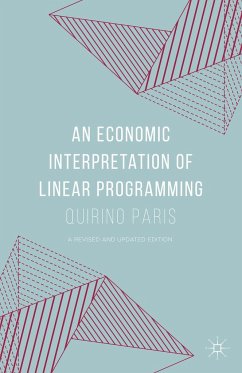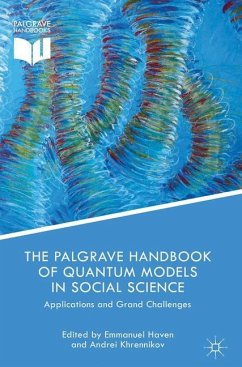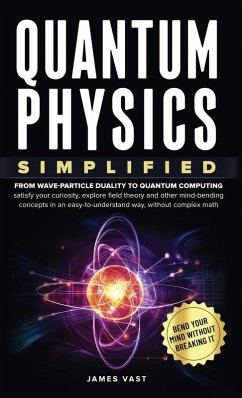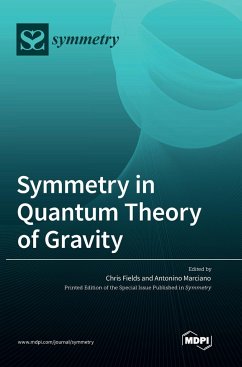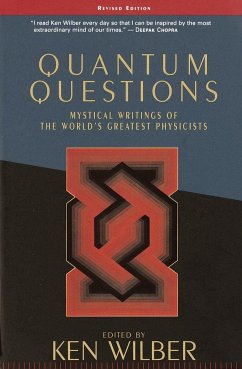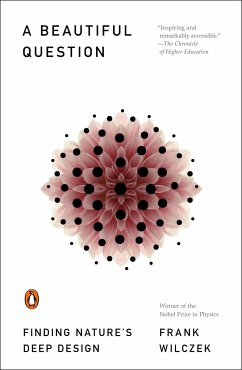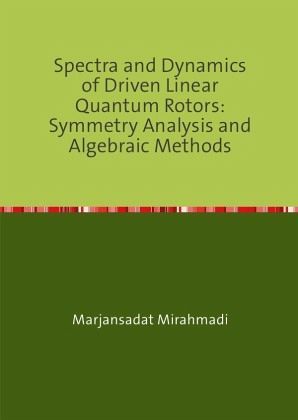
Spectra and Dynamics of Driven Linear Quantum Rotors: Symmetry Analysis and Algebraic Methods
Versandkostenfrei!
Versandfertig in 6-10 Tagen
34,99 €
inkl. MwSt.

PAYBACK Punkte
0 °P sammeln!
The development of laser technologies and techniques to cool atoms and molecules has opened new possibilities to manipulate and control quantum matter by tailored external fields. In particular, quantum rotors subject to external fields have enjoyed considerable interest of both the physics and chemistry communities. Furthermore, experimental as well as theoretical investigations of the dynamics of driven quantum rotors have provided insight into fundamental aspects of quantum dynamics, such as revival structures, quantum-classical correspondence, and quantum chaos.Herein, we investigate the s...
The development of laser technologies and techniques to cool atoms and molecules has opened new possibilities to manipulate and control quantum matter by tailored external fields. In particular, quantum rotors subject to external fields have enjoyed considerable interest of both the physics and chemistry communities. Furthermore, experimental as well as theoretical investigations of the dynamics of driven quantum rotors have provided insight into fundamental aspects of quantum dynamics, such as revival structures, quantum-classical correspondence, and quantum chaos.
Herein, we investigate the spectral properties as well as the dynamics of a two-dimensional (planar) linear quantum rotor exposed to external orienting and aligning fields. Supplemented by numerical computations that reach beyond what is achievable analytically, we paint quite a complete picture of the physics of the driven planar rotor. The conditionally quasi-exact solvability of the corresponding eigenproblem enables obtaining the lower part of the spectrum analytically. However, this is only possible under certain conditions imposed on the strengths of orienting and aligning interactions. By making use of Lie-algebraic and group theoretical methods, we calculated all algebraically obtainable eigenvalues and eigenfunctions.
Building on our knowledge of the analytic stationary states and aided by our numerical calculations, we investigated the dynamics that arises from the interaction of a rigid rotor with aligning and orienting fields that have particular temporal shapes: an ultra-short pulse (d-kick) and rapidly switched-off or switched-on pulses. For these types of pulses, we found analytic expressions for the resulting wavefunctions, kinetic energies, and the evolution of orientation and alignment. In addition, the revival structure of the resulting wavepackets and the quantum-classical correspondence is captured by the space-time dependence of the probability density known as quantum carpets.
Herein, we investigate the spectral properties as well as the dynamics of a two-dimensional (planar) linear quantum rotor exposed to external orienting and aligning fields. Supplemented by numerical computations that reach beyond what is achievable analytically, we paint quite a complete picture of the physics of the driven planar rotor. The conditionally quasi-exact solvability of the corresponding eigenproblem enables obtaining the lower part of the spectrum analytically. However, this is only possible under certain conditions imposed on the strengths of orienting and aligning interactions. By making use of Lie-algebraic and group theoretical methods, we calculated all algebraically obtainable eigenvalues and eigenfunctions.
Building on our knowledge of the analytic stationary states and aided by our numerical calculations, we investigated the dynamics that arises from the interaction of a rigid rotor with aligning and orienting fields that have particular temporal shapes: an ultra-short pulse (d-kick) and rapidly switched-off or switched-on pulses. For these types of pulses, we found analytic expressions for the resulting wavefunctions, kinetic energies, and the evolution of orientation and alignment. In addition, the revival structure of the resulting wavepackets and the quantum-classical correspondence is captured by the space-time dependence of the probability density known as quantum carpets.



